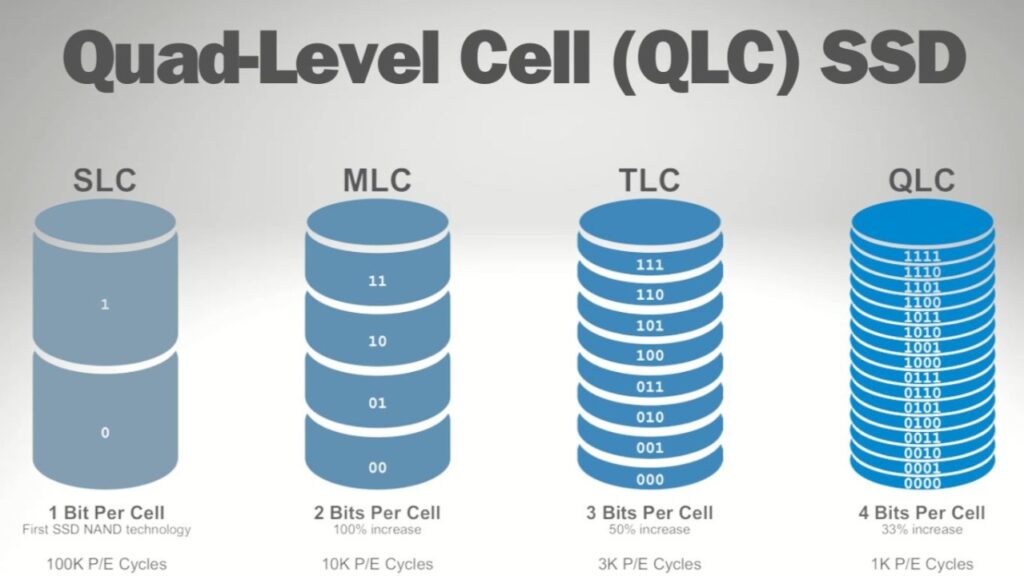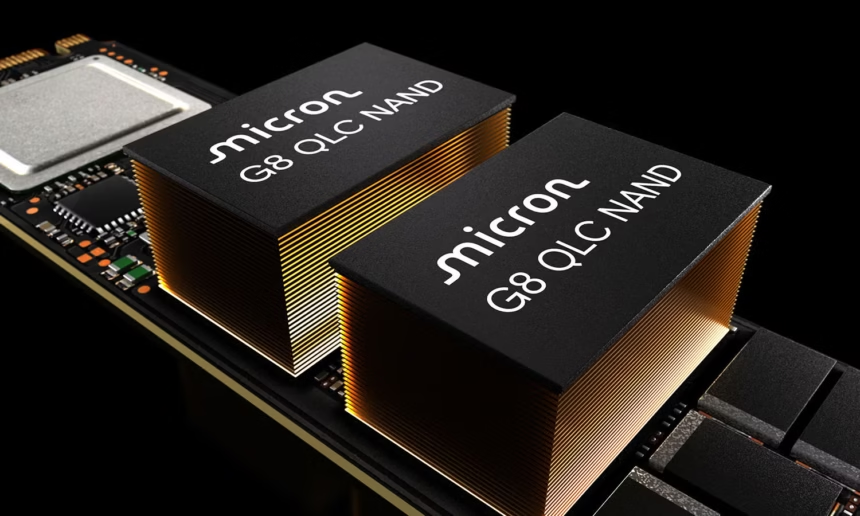The Data Deluge and the Need for Machine Learning
Data defines the time we live in. Every click, every purchase, and every sensor reading adds to an ever-growing sea of information. Machine learning (ML) is at the forefront of making sense of this huge amount of data. It is a revolutionary field that enables everything from personalized recommendations and medical diagnoses to self-driving cars and advanced fraud detection systems.
Machine learning applications have an insatiable need for data. To train complex models, you need huge datasets, and storing and getting this data quickly is a major problem in the whole ML pipeline. This is where new storage technologies come in, and one that is getting a lot of attention is QLC NAND.
Hard Disk Drives (HDDs) have long been the most common type of storage in data centers because they are cheap at scale. Single-Level Cell (SLC), Multi-Level Cell (MLC), and Triple-Level Cell (TLC) NAND flash are also popular because they are fast and last a long time.
But as datasets grow at an exponential rate, the limitations of these technologies in terms of either cost per gigabyte or density become more and more clear for some machine learning applications. This makes it very important to find storage solutions that can better balance capacity, cost, and performance. Enter QLC NAND.
What is QLC NAND? The Fourth Bit Frontier
QLC NAND, which stands for Quad-Level Cell NAND, is the newest version of flash memory technology. QLC NAND is different from its predecessors because it stores four bits of data in each physical cell instead of one (SLC), two (MLC), or three (TLC).
This basic difference has a big effect on storage density and cost. QLC NAND has a lot more capacity and costs less per gigabyte than other types of NAND flash because it stores more data in the same physical space. This makes it a naturally appealing choice for the huge storage needs of many machine learning applications.
Picture a storage cell as a small box. SLC uses one compartment, MLC uses two, TLC uses three, and QLC NAND cleverly divides it into four. By packing more bits into each cell, chip makers can make flash chips that hold more data for the same cost of the wafer. This means that solid-state drives (SSDs) will be cheaper for the end user.
But this higher density has some downsides. To store four bits per cell, the voltage levels have to be more precise, which makes writing and reading data more complicated and possibly slower. Also, because the voltage cycles happen more often, the flash cells are under more stress, which can affect the write endurance of QLC NAND compared to SLC, MLC, and even TLC.
The Sweet Spot: Where QLC NAND Works Best for Machine Learning
Even with these problems, QLC NAND is a great option for certain machine learning applications and workloads. Because it has a lot of space and is cheap per gigabyte, it is great for storing large amounts of training data. In a lot of ML workflows, the training phase means reading a lot of data over and over again. Write endurance may be an issue for data that is written over and over, but this isn’t a problem for training because it mostly involves reading.
Think about what it would be like to train a big language model or a complicated image recognition system. These jobs often need a lot of data, like petabytes. Using regular TLC NAND or even HDDs for such large datasets can be too expensive or cause a lot of lag. QLC NAND is a cheaper way to store these huge datasets, so data scientists and engineers can get the information they need without going over budget.
In addition, QLC NAND can be used well in the inference stage of machine learning applications. After training a model, it is used to make predictions about data it has never seen before. This inference process usually requires a lot of reading, so the high read speeds of modern QLC NAND SSDs are helpful. Even though write operations happen less often during inference, the performance can still be much better than with traditional HDDs.
Facing the Challenges: Write Endurance and Performance Factors
When it comes to machine learning applications, the main worries about QLC NAND are its write endurance and write performance. Because there are more voltage states in QLC NAND cells, they can usually handle fewer program/erase (P/E) cycles than other types of NAND. This means that writing and rewriting data to QLC NAND a lot over a long period of time could make it wear out faster.

But new technologies for controllers, wear-leveling algorithms, and over-provisioning methods are always making QLC NAND SSDs last longer. Most of the time, modern QLC NAND drives have endurance ratings that are good enough for many read-heavy machine learning applications, especially those that involve training and inference with large, mostly static datasets.
Another thing to think about is how well it writes. Writing to QLC NAND can take longer than writing to SLC, MLC, or TLC NAND. This is because it is harder to set the exact voltage levels needed to store four bits in each cell. This could be a problem for write-heavy ML workloads like frequent data preprocessing or online learning scenarios where the model needs to be updated all the time. However, it’s not as big of a deal for the read-heavy phases of training and inference that many machine learning applications go through.
How to Use QLC NAND in Your ML Infrastructure
If you’re thinking about adding QLC NAND to your infrastructure for machine learning applications, here are some useful tips:
Identify Read-Heavy Workloads: Use QLC NAND to store large training datasets and for the inference stage, when read operations are more common.
Implement Data Tiering: Use a tiered storage system that uses faster, longer-lasting NAND (like TLC or even MLC for smaller, frequently updated datasets) for tasks that require a lot of writing and QLC NAND for storing a lot of data. (Interlink to a blog post that explains how to use data tiering strategies).
Use Caching Mechanisms: Use caching layers (both hardware and software) to store data that is accessed often, which will lower the number of reads from the QLC NAND and speed up the overall performance.
Keep an eye on the health of your drives: Use strong monitoring tools to keep an eye on the health and lifespan of your QLC NAND SSDs. Most modern operating systems and storage management software can do this.
Think about over-provisioning: Some QLC NAND SSDs let you over-provision, which means you can set aside some of the drive’s space as extra spare space. This can help make writing last longer and work better. Check the documentation for your SSD for more information.
Stay Up to Date on Firmware: Make sure to update the firmware on your QLC NAND SSDs on a regular basis. Firmware updates that improve performance and battery life are common from manufacturers.
The Future of QLC NAND in Machine Learning
The role of QLC NAND in machine learning applications is only going to get bigger. As manufacturing processes keep getting better and controller technology keeps getting better, the performance and durability of QLC NAND will probably get even better, making it good for even more ML workloads.
The rapid growth of data and the growing use of machine learning applications are making people want more affordable, high-capacity storage options. This makes QLC NAND a key enabling technology. It will be very important for making it easier for everyone to get to the infrastructure needed to train and use more complicated ML models that it can provide a lot of storage at a lower cost.
Also, new ways to compress and deduplicate data can make QLC NAND even more useful and last longer in machine learning settings. As these technologies evolve, they will further mitigate the challenges associated with write endurance and performance.
Accepting the Possibilities of QLC NAND for Machine Learning
QLC NAND is a big step forward in storage technology. It has a lot of benefits in terms of density and cost-effectiveness, especially for machine learning applications that use a lot of data. There are some problems with write endurance and performance, but careful planning of workloads, smart use of data tiering and caching, and ongoing technological progress are making it possible for QLC NAND to be widely used in ML infrastructure.
Data scientists, machine learning engineers, and IT professionals can use QLC NAND to make their work easier, handle large datasets more efficiently, and speed up the creation and release of new machine learning applications by knowing what it can and can’t do.

